Tank Goodness, At Last: Army, BAE Roll Out AMPV To Replace 56-Year Old M113
Posted on
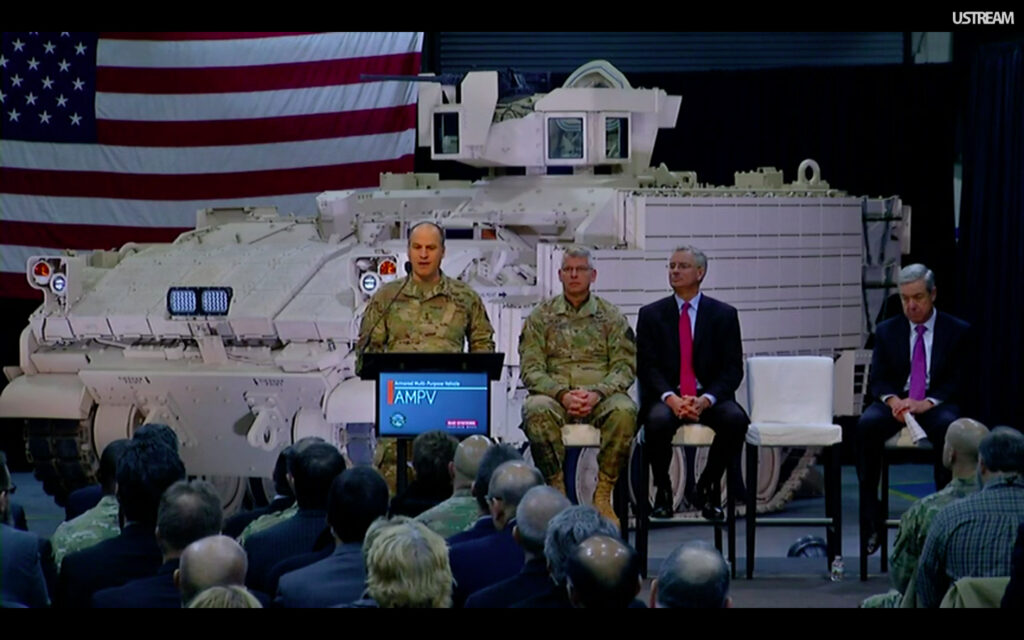
Army Maj. Gen. David Bassett (at lectern) and Col. Michael Milner (seated) with BAE Systems executives at the AMPV rollout this morning.
The armored workhorse of the US Army, the M113 tracked carrier, first entered service in 1960. This morning, less than two years after signing a contract to replace the M113 in its roles as armored ambulance, mobile command post, and more, the Army and BAE Systems rolled out the first production-representative Armored Multi-Purpose Vehicle (AMPV). It took 56 years of casualties in the under-armored M113, from Vietnam to Iraq, and the multi-billion-dollar implosion of the previous replacement program, the Future Combat Systems, but the Army has finally gotten in gear.
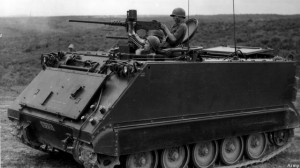
Army M113 in Vietnam
“In a time when we’re told consistently that Army acquisition cannot deliver, we’re going to do the only thing we can to prove them wrong, and that is delivering on budget, on schedule, systems that our soldiers want and need,” said Maj. Gen. David Bassett, the Army’s Program Executive Officer for Ground Combat Systems (PEO-GCS), in a ceremony this morning at BAE’s York, Pennsylvania tank plant. “We’re not going to wait on some elusive acquisition reform to make our job easier,” he said — and so far, AMPV is indeed on budget and on schedule.
“But this not the finish line,” said Bassett, adding a snarky reference to the recent Army-Navy game: “The last thing we want to do is celebrate too soon – like Navy did — because there’s things that can still bring this program down.”
What are those dangers? Donald Trump is probably a net plus for AMPV: Although AMPV is primarily intended for high-tech maneuver warfare in Eastern Europe, not a high priority for a Russophile administration, Trump’s determination to rebuild the military in general and the Army in particular should free up funds. Congress likewise seems supportive, since the program has avoided costly slip-ups — one alleged overrun turned out to be a reporter’s error in math — and employs skilled blue-collar workers in Pennsylvania.
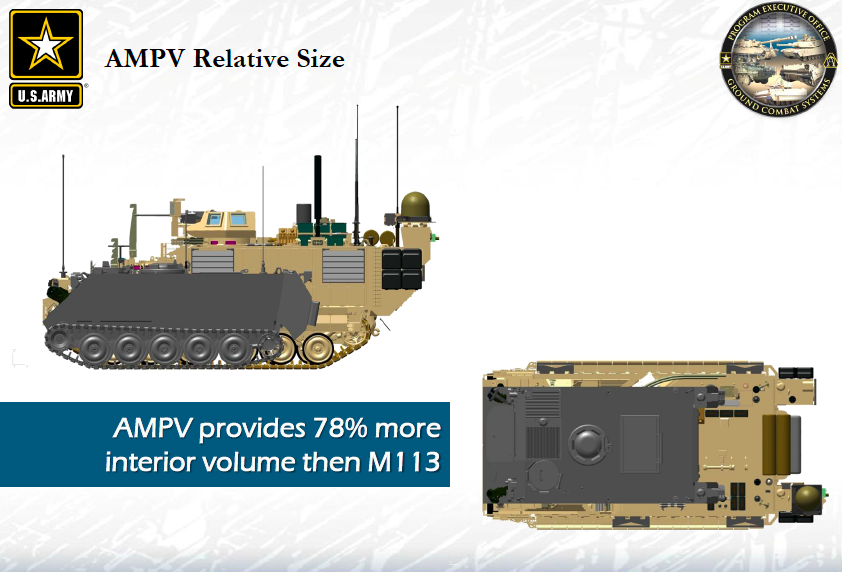
The future Armored Multi-Purpose Vehicle (AMPV) compared to the M113 it will replace
Arguably the Army’s biggest enemy, on AMPV as on many other programs, is itself. As the largest, most bureaucratic, and most tribal of the services, the Army is all too capable of tying itself in knots. Good ideas must walk the painful stations of the cross, paying obeisance to every faction and fiefdom, until they are burdened down with unrealistic and unaffordable requirements from all sides. At today’s ceremony, both Maj. Gen. Bassett and his project manager for AMPV, Col. Michael Millner, specifically highlighted how the Army had reigned in its wish-list and, where necessary, given up on requirements that would have been too costly or technologically demanding to meet.
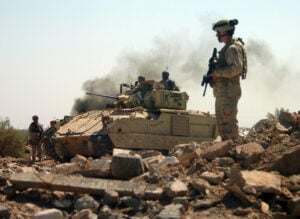
The Army won’t be able to replace its ’80s-vintage M2 Bradleys, like the one show here in Iraq, for a long time to come.
Indeed, in stark contrast to the failed Future Combat System, which would have replaced not only the M113 but the M2/M3 Bradley troop carrier and M109 Paladin howitzer with a family of high-tech vehicles, the Armored Multi-Purpose Vehicle is modest in both technology and scope. The AMPV is an evolution of the Bradley, losing the heavily-armed turret but gaining a thoroughly upgraded hull with better protection, power generation, and automotive performance. Many of these same upgrades are already being added to the M109 and will be added to the Bradley, which will not only enhance performance but simplify logistics. None of the individual improvements is sexy or revolutionary, but they add up.
Variants of the AMPV will replace the M113 and its derivatives in five different roles:
- general-purpose armored transport for supplies and troops (the one rolled out today was a GP variant);
- Mortar carrier, providing on-call fire support to frontline units more quickly than field artillery howitzers and rockets can respond — a quick reaction capability combat battalions had lost;
- Armored ambulance, evacuating troops under fire and bring them back to treatment sites, including the
- Armored mobile clinic, treating wounded troops as close as possible to the front line;
- Mobile command post, carrying more and more powerful electronics than the aging M113-based command vehicles, with superior protection that lets commanders get much closer to the fight.
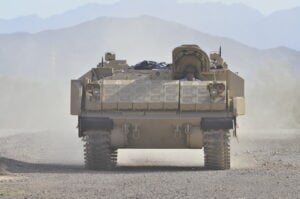
BAE Armored Multi-Purpose Vehicle (AMPV)
Currently, however, all 3,000 AMPVs are going into the armored brigades. Those are the frontline combat units that most urgently need the upgrade, since they’d bear the brunt of any war in Europe. Even that subset of the Army, under the current budget, won’t get all its M113s replaced until the late 2020s. Then there are almost 2,000 more M113s in support units; they won’t get replaced until the 2030s, 70 years after the design first entered service.
Still, the armored brigades are clearly the place to start. “The Armored Bridge Combat Team is not the kind of formation that you send out when you want to put up a school, hand out bags of rice, or build a road,” said Bassett. “It’s our most lethal formation — (and) this beautiful warfighting machine is going to make the ABCT even stronger.”
Subscribe to our newsletter
Promotions, new products and sales. Directly to your inbox.
